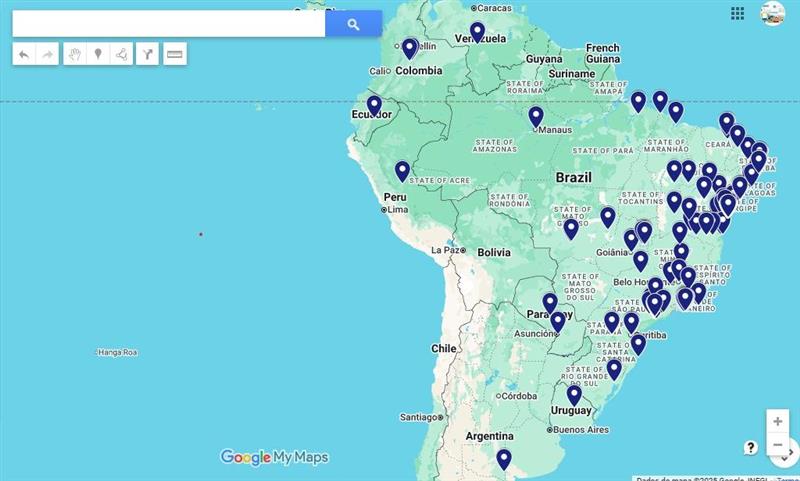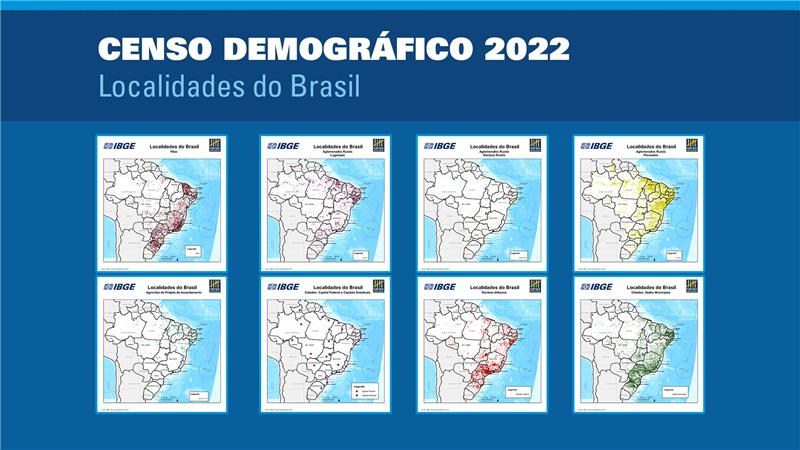bdia
IBGE updates Brazilian Environmental Information Database
November 07, 2023 10h00 AM | Last Updated: November 07, 2023 11h30 AM
Highlights
- IBGE releases new version of the Brazilian Environmental Information Database (BDiA). The product brings the thematic bases of natural resources in Brazil in the 1:250,000 scale.
- The BDiA allows to query data related to the following aspects of the Brazilian territory: Geology, Geomorphology, Pedology and Vegetation.
- The Statistical Grid, a module for spatial querying integrated in the BDiA, allows to query different themes of the mapping of natural resources and other IBGE products.
- The BDiA is mainly destined to students and researchers, as well as to federal offices and private institutions in the environmental area.
- Among the new features of the 2023 version of the BDiA, two thematic modules were updated and the number of divisions available and data incorporated, increased.

The IBGE releases today (7) the updating of the Environmental Information Database (BDiA), which gathers the collection of thematic bases of natural resources in Brazil in the 1:250,000 scale. The data are produced in the following areas: Geology, Geomorphology, Pedology and Vegetation. There are more than 500 thousand polygons interpreted and 200 thousand points raised, allowing to know the physical and biotic characteristics in a number of geographic divisions. The BDiA can be accessed here.
Among other things, the BDiA allows to browse through the themes in their several levels of classification; make spatial queries by state, municipality, biome, etc.; query from the name of a mapping unit; export the bases in vector format (shapefile) and the statistics, information of mapping units, analyses and inventories in table format (xls and pdf); query a dictionary of concepts with the meaning of terms and acronyms used in the mapping; and import other databases available in geoservices in the wms format. The BDiA also provides the localization of users in real time.
“The BDiA was launched in 2018 and it has been mainly used by researchers, students and the academic area in general. It is also used by federal offices, like the National Institute for Spatial Research (INPE) and non-governmental organizations in the environmental area, which use especially the biome map. The BDiA easily allows to find detailed data on soil and vegetation in the entire country,” explains Luciana Temponi, IBGE manager of Mapping and Natural Resources.
The Statistical Grid of Environmental Data is part of the Experimental Geoscientific Investigations and it is showed in a specific module of the BDiA, in which users manage to survey information from different themes of the mapping of natural resources, as well as from other IBGE products, like monitoring land use and cover. The grid system was adopted to enable querying environmental data among different themes in an integrated way, as well as to produce statistics to subsidize the analysis of the distribution of natural resources in Brazil.
“The Grid allows users to match different themes, i.e., instead of downloading the information and then crossing the data, they manage to cross them in the platform itself by mixing several layers,” highlights Marta Minussi, BDiA´s technical manager.
The 2023 version of the BDiA introduces some new features. For the first time ever, the data in the Statistical Grid are available in shapefile format, together with the respective methodological note. “Besides viewing information on the screen, users can download the shapefile and tables that come with it,” adds Minussi. The shapefiles store geospatial data and are used by Geographic Information Systems (GISs).
Two sets of thematic data (geology and vegetation) were updated and new themes in the grid query (biodiversity, 2010 population and hydrographic regions and basins) were included. New features were implemented, most of them related to new data divisions. More details can be found in the “Environmental Information Database (BDiA): Mapping Natural Resources (MRN) – Scale 1:250,000” methodological note.

















